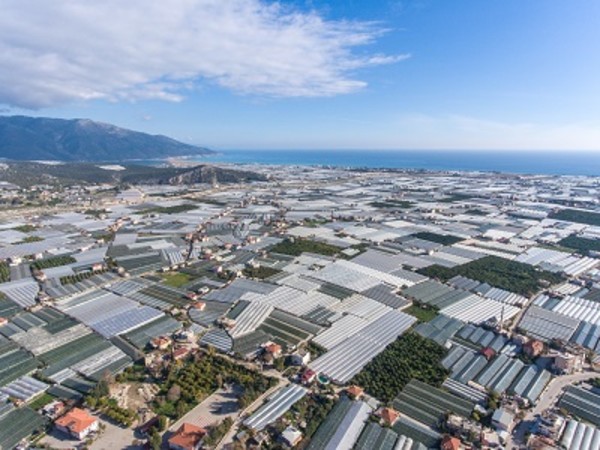
Economy, risk for the sector of agricultural mechanization
Turkish lira currency crisis implies a reduction in investment capacity for the purchase of agricultural machinery imported from other countries. Italy's mechanical industry, which in Turkey found an interesting outlet for its products, has been seriously penalized. It is difficult to foresee practical ways to solve the current situation, although analysts believe that the agricultural sector, which is highly strategic for the country, might recuperate its dynamism in a relatively short time
It is not essential to know if the Turkish crisis is going to damage Italian companies but, rather, to understand how long it is going to last. The devaluation of the Turkish lira, exploded during summer, has heavily influenced the budget estimation of many companies, for which Turkey has long represented a market capable of absorbing increasing export shares.
A competitive country that stopped growing
Among the industrial sectors, the agricultural machinery industry has certainly supported, compared with others, the development of this country in the last few years. Turkish economy was required to adapt to the most modern production standards and get aligned with other Western countries, to withstand global competition. The Italian companies seized the opportunity by keeping high export levels until the end of last year when in Turkey were registered 72,350 tractors, that is 3% higher than 2016.
A consistent part arrived from Italy, that in 2017 exported tractors and agricultural machines for € 207 million, 33.4% higher than in 2016.
To be precise, Turkey worked at a steady pace to modernize the whole agricultural sector, with growth rates comparable to the five-year economic programmes of the former USSR during the Cold War.
Therefore, Italy and Turkey saw their trade relations grow in the sector of agricultural mechanization, with tractors in the 3rd place for imports in Turkey, and 19% of market share. This data confirms how much “made in Italy” products are essential for Turkish farms.
A transversal crisis
With these premises, the crisis which was about to explode in 2018 was destined to destabilize many Italian companies, besides creating investor uncertainties and giving rise to fears of a domino effect for the economies of Europe and USA.
This is a storm that did not only involve agricultural mechanization, but also other sectors in which huge investments have been made by Turkey in the last few years. One example is the packaging sector, developed thanks to the export increase of Turkish commodities goods. Italy stands out as the first supplier of these industrial facilities with a 35% of market share. The Italian leadership also regards the sector of wood processing (with a market share of 26%), due to furniture production, increased in these last years and partly inspired to Italian production patterns.
Real-time damage assessment
The economic headwinds though did not start in August, when the Turkish lira lost, within a few days, over 40% of its value compared with the start of the year. In fact, in June a decrease in new registrations had already occurred, with 28,000 units, 20% less than the first semester of 2017. This decrease was perfectly in line with the export decrease of Italian companies to Turkey: tractors and agricultural machines decreased by over 19% (67 millions euro). Moreover, other damages seem to involve Italian companies of this sector, which made huge investments in Turkey: “The uncertainty involving the local economy – said Alessandro Malvolti, President of FederUnacoma – risks not only to penalize our direct exports but also to restrict the investment strategies for the creation of new start-ups and joint ventures. Therefore, who decided in the past to produce in loco, today has to deal with the decrease of the internal demand. In this context, the risk is that the Turkish market addresses to particularly aggressive manufacturers who offer very cheap products, and who had been previously excluded by the market for the imposition of import duties from the Turkish government to the Far East.”
The dream of a hub for the Far East is at risk
The preoccupation of Italian entrepreneurs is addressed beyond Turkish borders and towards countries such as Giordania, Syria, Lebanon, Iraq, and Iran, for which Turkey has represented, in these last few years, a sort of commercial hub capable of supplying a privileged lane for Italian products, agricultural machines included. At this point, a series of question arises: How long this situation is going to last? What is going to happen next? Shall we only wait for the storm to pass and see if Turkey resumes the primary role abruptly interrupted last year? Is it perhaps rather a structural crisis? Analysts, whose task is to foresee the worst events, believe that this is not the most probable or imminent risk.
The greatest preoccupation regards the political direction that President Erdogan is going to undertake, as well as the management of relations between the government and the Turkish business sector. Despite that, everybody seems to agree on a point: the Turkish economy will finally recover and find a way out, starting to work again even if at a slower pace than in the past. But the greatest uncertainty concerns the direction undertaken by the country, the geopolitical context of action, the political balances, and the international alliances.
Companies will have to change their strategic approach and detect promptly new shareholders. In any case, it is difficult to imagine that a country of 80 million people (considering only the Turks living inside the geographical borders) can stop pursuing the new life models set as a goal and that include food habits, redesigning living spaces and quality of the environment.
All these development models require investments in technologies and equipment. This is especially true for the agricultural sector, that requires a modernization process in order to respond to the demand for better food quality and safety.








